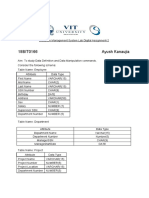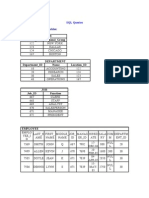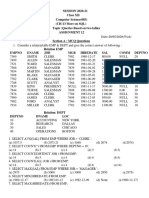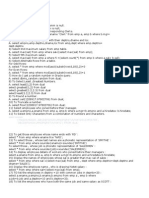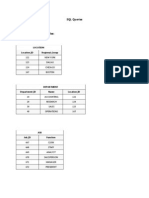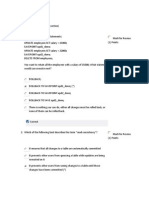0% found this document useful (0 votes)
48 views3 pagesDBMS Assignments
The document outlines an assignment for B.Sc.CA Sem - IV focusing on SQL practicals, including the creation of 'Employee' and 'Department' tables with specific columns and constraints. It provides SQL queries for various operations such as displaying employee records, filtering by hire date, and joining tables. Additionally, it includes explanations for SQL concepts like 'Alter table', 'Join', and 'Primary key'.
Uploaded by
sanskarichora062Copyright
© © All Rights Reserved
We take content rights seriously. If you suspect this is your content, claim it here.
Available Formats
Download as PDF, TXT or read online on Scribd
0% found this document useful (0 votes)
48 views3 pagesDBMS Assignments
The document outlines an assignment for B.Sc.CA Sem - IV focusing on SQL practicals, including the creation of 'Employee' and 'Department' tables with specific columns and constraints. It provides SQL queries for various operations such as displaying employee records, filtering by hire date, and joining tables. Additionally, it includes explanations for SQL concepts like 'Alter table', 'Join', and 'Primary key'.
Uploaded by
sanskarichora062Copyright
© © All Rights Reserved
We take content rights seriously. If you suspect this is your content, claim it here.
Available Formats
Download as PDF, TXT or read online on Scribd
/ 3












